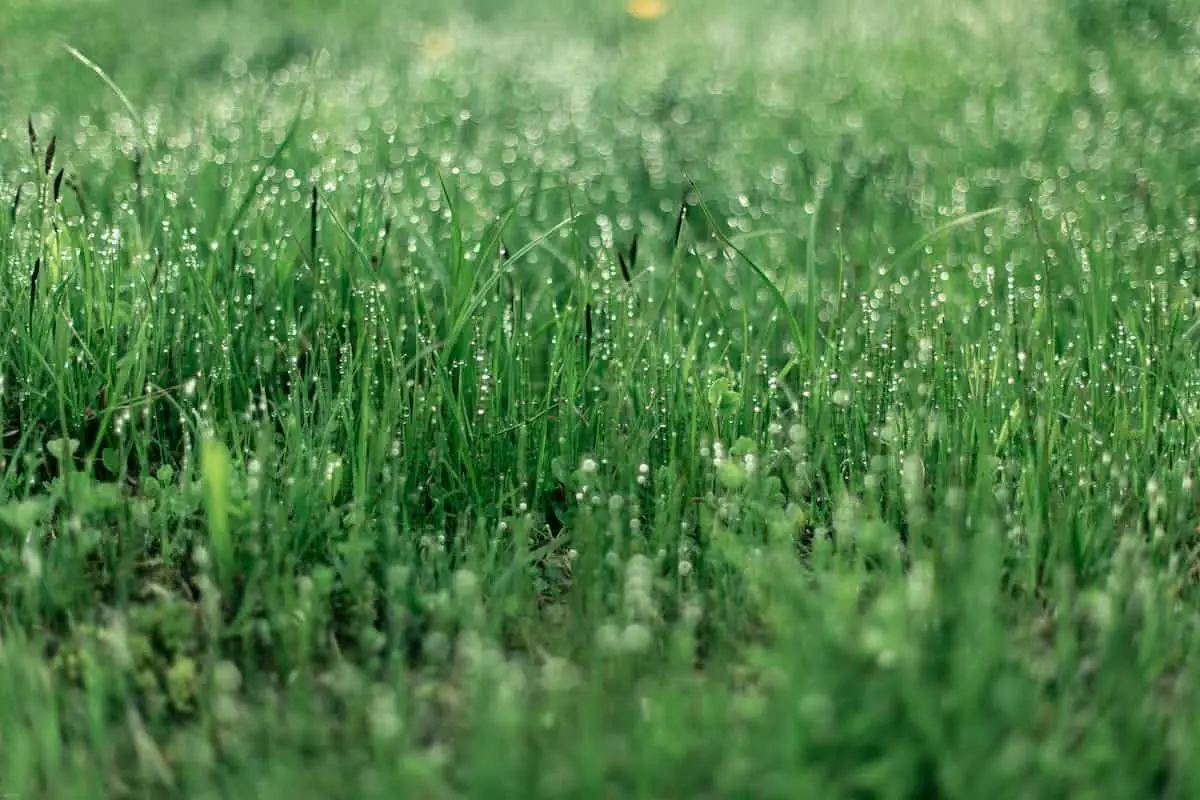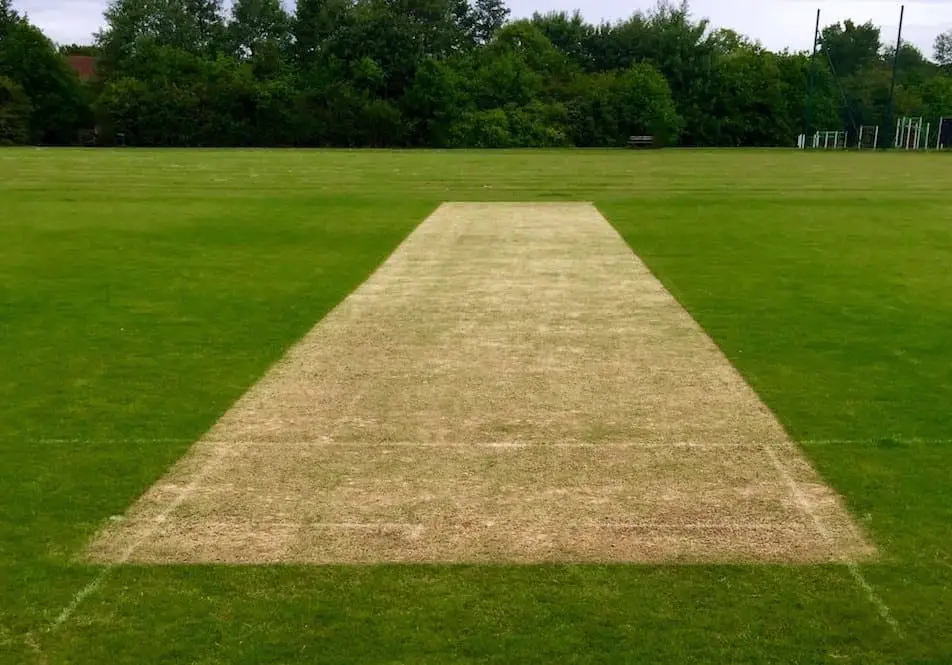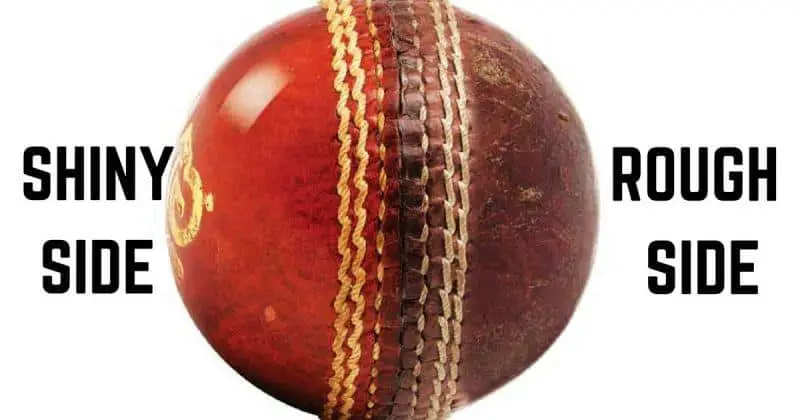Have you heard a captain talking to the commentators about the possibility of the dew and how it compelled him to go for ‘bowling-first’ after winning the toss? In cricket, the ‘dew factor’ is not an uncommon phenomenon. But what is this dew factor?
The dew factor in cricket is the phenomenon caused due to the excessive moisture present on the cricket field which makes the ball moist and difficult to grip and control. Excessive dew on the cricket field impedes the players’ natural performance and affects the overall game.
It may make you wonder why so much importance is given to the dew factor. Is it so big a factor to be considered during the toss? Whom does it affect more – batsmen or bowlers? Does it influence all formats of the game?
Let’s dive deep and figure out how, why, and when the dew factor sets in, how the players are affected, and what are the ways to deal with it.
What is ‘Dew Factor’ in Cricket?

Dew is basically moisture that forms over the grass in the outfield. In the daytime, the earth’s surface heats up faster than the air, while in the evening time the earth’s surface releases heat quicker, but the air around it still remains warm.
So, the dew is formed due to the temperature difference between the ground and the air above it, resulting in the condensation of the water vapor molecules in the air.
Since the ground is cooler than the air at night, a layer of moisture or the dew can be noticed on the grass field more often during day-night games.
The dew mainly affects the bowlers and the fielders from the team that bowls second in such matches, as they have to bowl and field during evening or night time. This phenomenon in cricket is popularly known as the “dew factor”.
What are the Effects of Dew on a Day-night Match?
In the day-night or night games, the dew or the moist on the field makes the ball wet every time it rolls through the ground.
Such a ball tends to get slippery and harder, and it is always more difficult to grip, and hence it directly affects the bowler’s line and length, thereby putting the bowlers to a disadvantage.
The fielders too find it difficult to grab or throw a dew-affected wet ball. The batsmen are also affected to some extent. In the next section, we will see the effects of the dew in depth.
Effect of Dew
The main issue with the dew is that it makes the ball wet due to the moisture present on the outfield. Let’s see the overall effect of dew on pitch, bowlers, captains, and fielders in detail.
Pitch

Does the dew affect the pitch? Oh yes, moisture in the pitch can strangely change its behavior. Generally, the pitch gets slower and break in the second innings or the later part of the match. But the moisture actually freshens up the surface, and hence cracks on the surface are not widened.
When a bowler bowls on a moist surface, the ball loses some momentum after making contact with the surface before it reaches the batsman. Also, the delivery tends to offer a relatively lesser bounce.
Another problem with batting on a damp pitch is the lateral swing in the air, which is the outcome of the moisture on the surface.
Fast Bowlers
In a match, the bowling side continually tries to shine one side of the ball by applying saliva or sweat, and rub it against their clothing, leaving the other side rough. The difference in the shine or the smoothness between the two sides of the seam ultimately causes the ball to swing when bowled by pacers.

Having said that, every time the ball rolls on the field, it gets drenched. So, it becomes very difficult to maintain the difference in shine or the smoothness in case of dew. Also, any amount of wiping the ball does not make it a completely dry ball. While bowling with such conditions, pacers have to resort to bowling with cross-seam grip as holding the ball with the upright seam position is not a viable option.
Spinners
A wet ball is equally difficult to grip for spinners as well. Generally, the spinners come on to bowl after the initial few overs bowled by the pacers. By this time, the ball already gets drenched.
Compared to wrist spinners, the finger-spin bowlers are affected more while bowling with such ball as they depend on gripping the ball to get the required amount of turn.
Without a firm grip, it is impossible to get the revolutions on the ball. With such drawbacks, the finger spinners have to rely on the line and length more than the spin, but again that’s not an easy task due to the gripping issue. It also refrains the bowlers from trying out too many variations. All they can look to do is to bowl on the pads to prevent the batsman from hitting freely.
In this one-day match, while bowling against Australia, Indian leg-spinner Yuzvendra Chahal conceded 80 runs and got just one wicket. Chahal had a tough time gripping the ball because of the dew on the field.
Fielders
The difficulty in gripping as a wet ball affects the folders as well. A wet ball naturally slips out of the fielders’ hands faster than it gets in. The fiddlers need to be extra careful while dealing with such a ball when the dew is on.
To avoid the ball getting out of the hands, the fielder’s fingers should point in the conventional upwards position while grabbing a high catch. But it’s easier said than done. On many occasions, usually in day-night or night matches, we have seen the fiddlers dropping catches because of the dew factor.
Captains
Cricket is not just about bowlers and batsmen or runs and wickets. Many external factors affect the sport such as the slowness of the outfield, the bounce in the pitch, the weather conditions, and the direction of the wind.
In a day-night match when the dew factor comes into play, bowlers struggle with poor grip, while the batsmen have to be ready for a delivery that can skid through the pitch and bounce less.
The captains have to factor in the dew conditions at the night. So, they usually prefer to bowl first and to finish off their team’s bowling before the dew sets in. Such decisions often surprise the viewers who are unaware of the dew factor and hence the rationale behind bowling first even on a good batting surface.
However, bowling first is not a guaranteed formula even with the dew factor, and many times we have seen the captains losing the plot after giving too much importance to the dew factor.
Limited Over Games and Test Matches
Dew is one of the major factors in limited over format, while apart from the initial few overs early in a day, the Test matches are by large unaffected from the dew factor. This is one of the reasons why there were not many takers for the day-night Test matches.
However, since the first day-night Tests played in 2015, a total of 12 day-night Test matches have been played so far. The use of the pink balls in day-night matches seems to tackle the dew factor to some extent. The linen present in the Pink ball’s seam absorbs the dew and hence helps with a better grip.
How to Overcome the Dew Factor?
The Pitches & Ground Committee of BCCI (Board of cricket for control in India) oversees the issues related to the dew factor on Indian grounds, and they have come up with the following ways to tackle the dew factor.
- No watering the outfield 2 or 3 days before the match day. As a result, the ground will become very dry, and it would absorb the moisture quickly.
- Cut the grass as low as possible to make the ground less wet.
- Use of tested non-toxic spray in neutralizing the initial dew.
- Drain out the dew using ropes during the breaks or in between overs.
- Use of super-soppers whenever possible to soak up the wet grass and carry it away into a drain.
Final Thoughts
In any day-night matches, the players and the captains mention about the dew factor without fail. We often find the captains or commentators justifying the ‘bowl-first’ decision after the toss. Also, there are quite a few occasions when we hear the losing team’s captain blaming the dew for the loss.
From seamers to spinners, from batsmen to fielders, all are heavily affected by the dew factor in day-night games. Though the groundsmen and the players deploy some countermeasures, it’s not completely avoidable.
The governing bodies should ponder over the use of special chemicals or materials if possible while making cricket balls to make the ball and cricket completely “dew free”.
